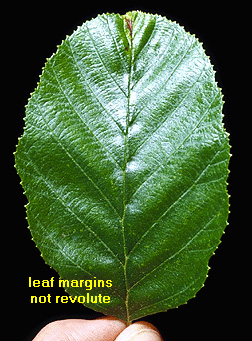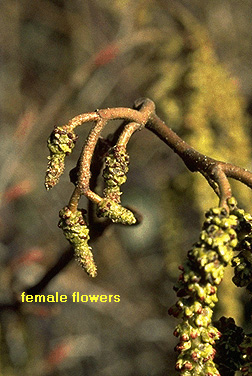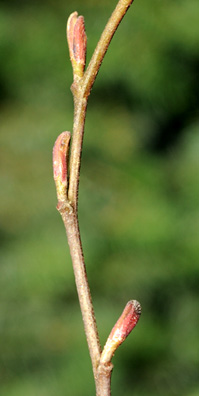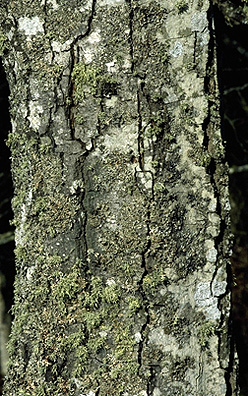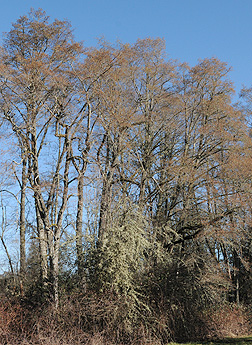 Virginia Tech Dendrology
Virginia Tech Dendrology
white alder Betulaceae Alnus
rhombifolia Nutt.
![]()
![]() symbol: ALRH2
symbol: ALRH2
Leaf: Alternate, simple, deciduous, ovate or oval, 2 to 4 inches long, with finely serrated or doubly serrated margins (not revolute); green to yellow-green above and paler green below. Short (1/2 to 1 inch), grooved petiole. Thicker and more leathery than other alders.
Flower: Species is monoecious but flowers are borne in unisexual aments (catkins); preformed male aments are slender, pendent, and hang in clusters of 2 to 5; female catkins are short and thick, borne at the ends of branchlets.
Fruit: A small semi-woody, brown cone about 1/2 inch long, persists through the winter, seeds are tiny unwinged nutlets, shed in the fall.
Twig: Slender, green turning to red-orange as they mature; stalked buds may be pointed or rounded, overlapping red scales.
Bark: Similar to red alder, outer bark is ashy gray to grayish brown, generally smooth but breaking into flat, irregular plates near the base, increasingly covered with white lichens as it ages.
Form: A moderate-sized tree growing 40 to 80 feet tall and 1 to 2 feet in diameter with a broad, dome-shaped, open crown. Also grows as a large shrub.
Looks like: red alder
- Sitka alder
- thinleaf alder
- Arizona alder
Additional Range Information: Alnus rhombifolia is native to North America. Range may be expanded by planting. Download the full-size PDF map.
External Links: USDAFS FEIS Silvics - USDA Plants Database - Horticulture Information - USDAFS Forest Products Lab
All material 2025 Virginia Tech Dept. of Forest Resources and Environmental Conservation; Photos and text by: John Seiler, Edward Jensen, Alex Niemiera, and John Peterson; Silvics reprinted from Ag Handbook 654; range map source information
